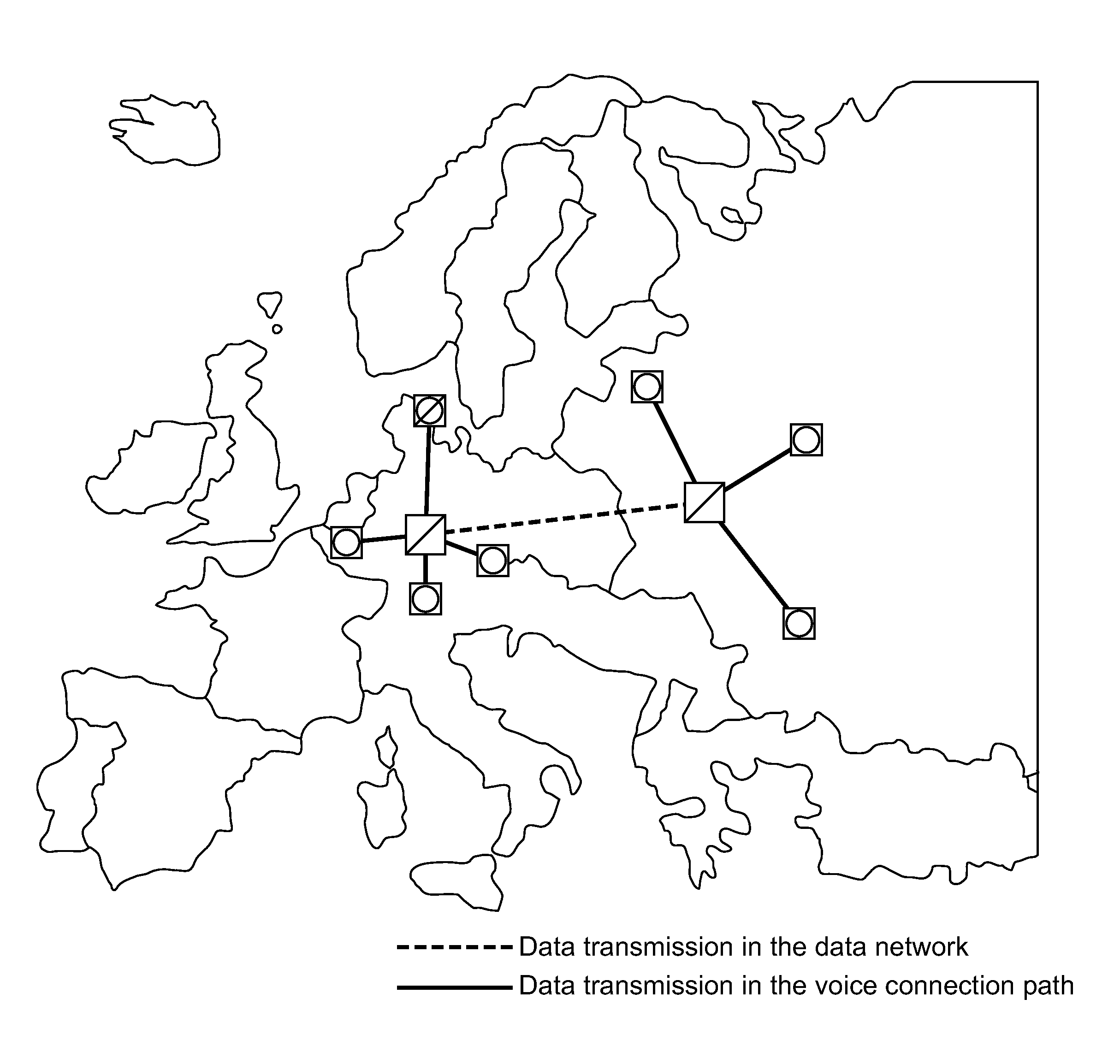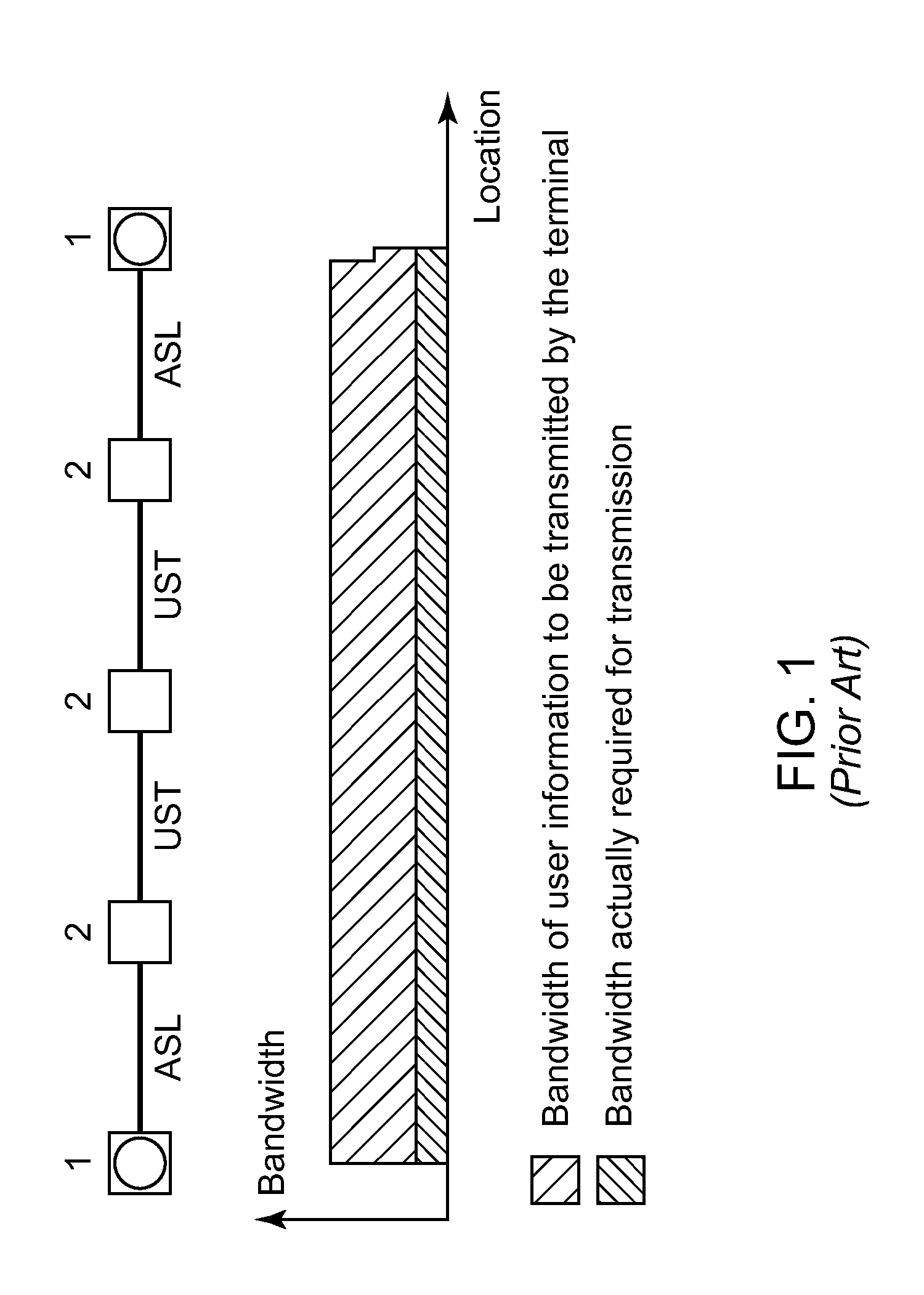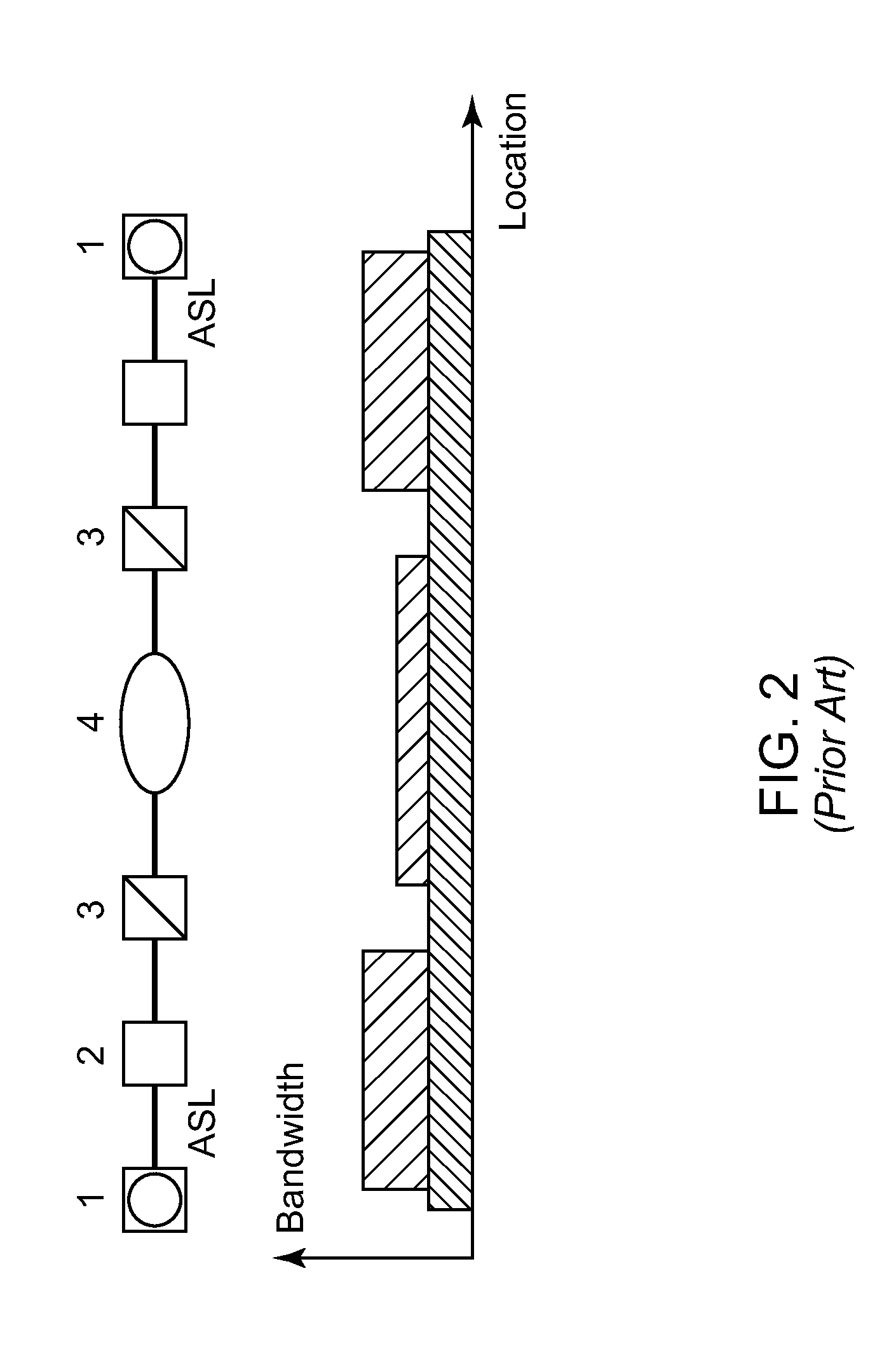Method for using digital data networks for the transmission of data via voice connection paths
a digital data network and voice connection technology, applied in the direction of data switching by path configuration, telephonic communication, electrical equipment, etc., can solve the problems of not fully exploiting the theoretically possible useful data rate of a digital transmission link over which low-bit-rate data must be transmitted, and using the transmission capacity so utilized, etc., to reduce the data rate, reduce the cost, and increase the transmission reserve
- Summary
- Abstract
- Description
- Claims
- Application Information
AI Technical Summary
Benefits of technology
Problems solved by technology
Method used
Image
Examples
Embodiment Construction
[0037]FIG. 1 shows a schematic representation of a prior art basic structure of data transmission in voice connection paths. The two terminals 1 are connected via an access line ASL to one of a plurality of exchanges 2. These exchanges are interconnected via voice connection paths ÜST. In order to set up a connection, usually one of the two terminals 1 sends its destination information to the corresponding exchange 2 which thereupon sets up a voice connection path ÜST between the two terminals 1. Owing to their technical construction, both terminals 1 are capable of coding the data for transmission in such a manner that it can be transmitted via a voice connection path. Such coding is based normally on multi-frequency tone signals of the kind known, for example, from multi-frequency tone dialing.
[0038]Usually, at the beginning of the connection, both terminals 1 test the characteristics of the voice connection path ÜST and of their own device type, in order then to agree interactive...
PUM
 Login to View More
Login to View More Abstract
Description
Claims
Application Information
 Login to View More
Login to View More - R&D
- Intellectual Property
- Life Sciences
- Materials
- Tech Scout
- Unparalleled Data Quality
- Higher Quality Content
- 60% Fewer Hallucinations
Browse by: Latest US Patents, China's latest patents, Technical Efficacy Thesaurus, Application Domain, Technology Topic, Popular Technical Reports.
© 2025 PatSnap. All rights reserved.Legal|Privacy policy|Modern Slavery Act Transparency Statement|Sitemap|About US| Contact US: help@patsnap.com



